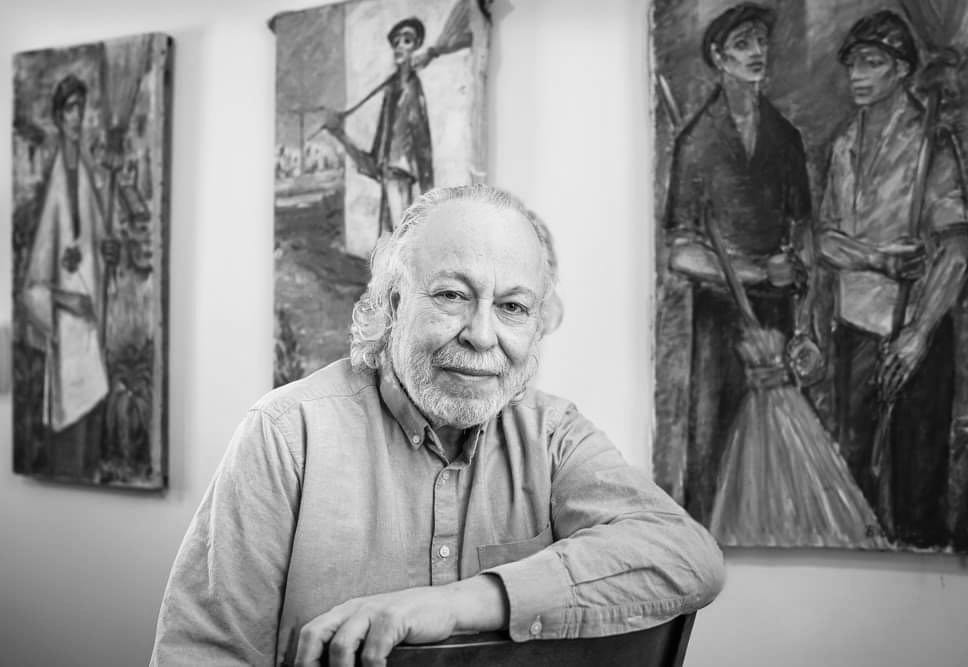
– Do you remember the exact moment you fell in love with cinema?
I did not fall in love with cinema. As a person with a visual anomaly (I see two dimensional images), I had difficulties watching movies as a young child. The experience was overwhelming visually. Also the viewing conditions of movies where I grew up were always difficult. In the gym of the school, Tarzan films were shown with Hebrew subtitles handwritten on a stripe on the side of the screen. A small sports hall over overcrowded with hundreds of sweaty children. The movies in the theaters were for adults. But I remember some films like Bambi, the red balloon, Chaplin, Laurel and Hardy and the Russian classic the stone which I remember struggling to watch all the way with my troubled vision. So Films were a mixed experience. Intense, demanding cognitively and entertaining.
As a teenager I was always drawn to comedy and humor. I was close to my father with whom we used to joke and make up jokes and think of visual short funny stories. After studying a year of History and a year of social studies I decided that what I wanted was to learn how to make films and I wanted to learn “hands on”. I got a job as an assistant in a biblical film and for 5 years I worked in different departments on the set of 25 feature films and many documentaries and other film shoots. I also went to the university for a couple of years until I felt I needed to move on and do films rather than study film.
And since 1980 I have been making independent films, self funded, low and no-budget films. First I was concentrated on comedy, but when my father passed away I realized I do not care to make other people laugh anymore and I concentrated in teaching myself to do documentary films and I also have developed methodologies for Applied Educational Media which is using educational media in non traditional viewing environments and spaces, like individualizing the visitor’s experience in the museum space.
Part of the methodologies involve learning to be a non intrusive observer, to become a “fly on the wall” able to observe and film events without influencing them. Other approaches were developed as an interviewer – to empower storytelling of interviewees – to be the best possible audience so they can be the best storytellers they can. Refining a minimalist approaches to dealing with visual history and historical films where the personal and the global are interwoven.
All these are part of the process of growing up and understanding what to do how to be purist and how to be ethical and how to do so that whatever I do is done to serve the content and no choices are random, but are part of a very long and exhausting critical process.
– When did you realize that the story living in your heart had to be turned into a screenplay and then into a film project?
My community’s unique history and also the inspiring survival story during WWII has captured my interest. I have done 3 films about the subject, wrote a book, organized a conference and am working on 2 exhibitions. I do not write scripts for my documentary films. I work with what I collect, what I researched and what I documented and interviewed. It’s a long process of weaving testimonies, archival footage, home videos or private photos, documents and other visual objects into a sequence of events that reconstruct a certain time.
– Is there a person you would like to thank for helping you bring your project to life?
My parents were supportive, inspiring and very creative. They were role models and they brought the unique story to my attention and helped me with my first steps of my career.
– Do you think the Wild Filmmaker Community is helping to turn your dream into a reality?
I believe the Wild filmmaker Community has a promising role in bringing independent filmmakers and their audiences in contact. It is also important for filmmakers to be able to distribute their work and get revenue that will help and encourage more independent work. As a person who has done self funded independent films for over 40 years – I hope to share some of my experiences and advice to encourage young filmmakers to go the way they choose and overcome all the hurdles along the way.
